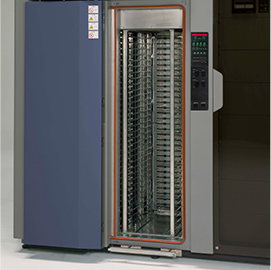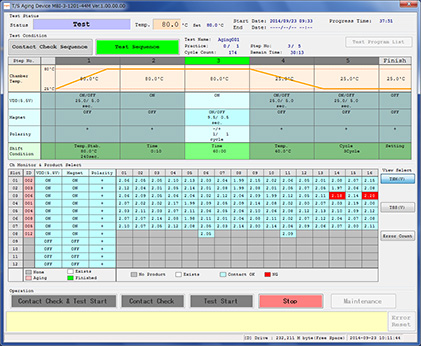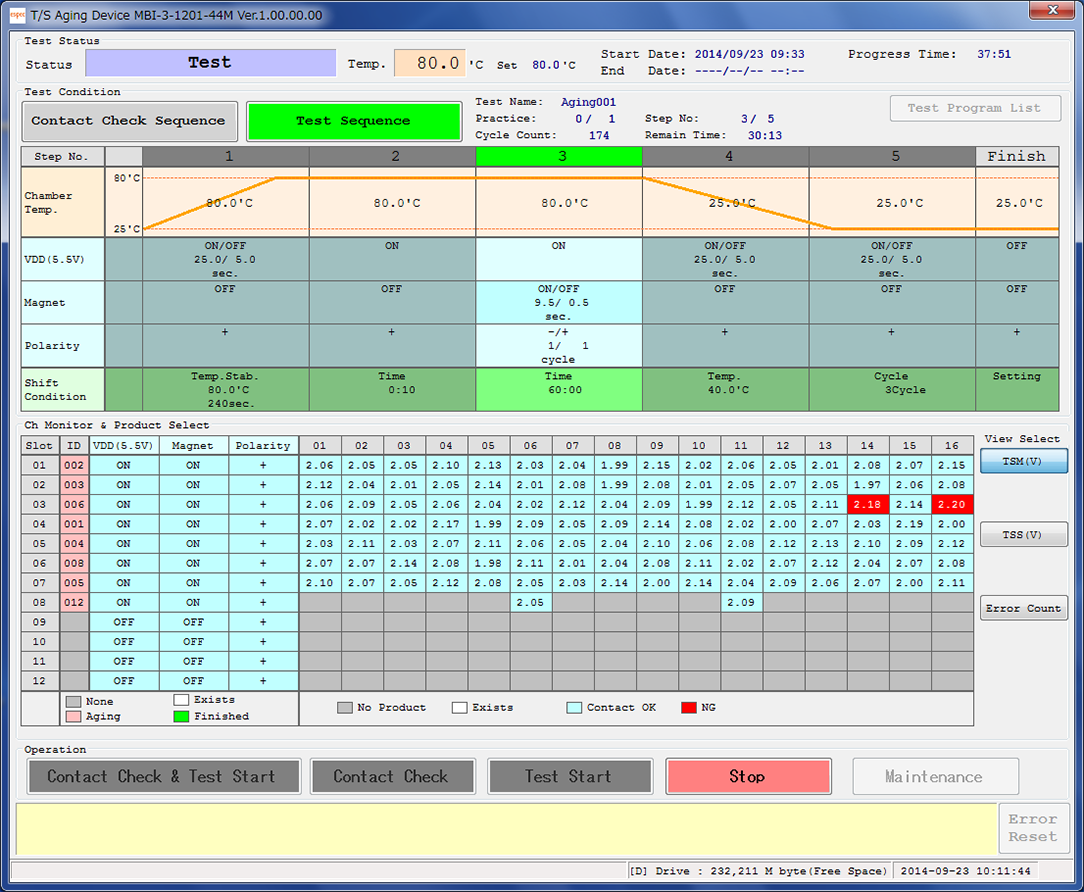Automotive sensor
burn-in system
Burn-in chamber for sensor screening
An ideal burn-in chamber for screening of sensors that make up reliable ADAS
With advances in automated driving and ADAS, sensors are becoming ever more important as safety features. There are various types of sensors mounted on cars for detecting people and lanes, accelerator pedal sensors, and power steering sensors. This chamber inputs a signal in a high-temperature environment to activate the sensor, then monitors the output to determine the quality.
Test category
- High-temperature screening test
- Low temperature test
Test devices
- Accelerator pedal sensor
- Power steering sensor
- CMOS sensors
Keywords
- ADAS
- Sensors
- Aging
POINT 01Efficient screening
POINT 02Automatic insertion/extraction mechanism
The chamber is equipped with an automatic insertion/extraction mechanism that can insert multiple burn-in board card edge connectors at once, allowing for streamlined burn-in testing.

Specifications
| Item | Specifications (reference values because of individual support products) |
|
|---|---|---|
| Burn-in system | Application voltage | +5.5V~+7.0V |
| Voltage application accuracy | within ±0.1V min. | |
| Voltage application setting | Sensor drive voltage | |
| Device output monitor | Comparator voltage+0.45V~+5.0V (fixed after fine tune setting with trimmer at initial introduction) |
|
| Output monitor circuit | Monitors device output up to 300 times per slot | |
| Chamber | Controlled temperature range | +70℃~+150℃ |
| Temperature uniformity | ±3℃(load, max. 600 W)*1 | |
| Temperature heat-up time | +40℃⇒+125℃ within 60 min. (no specimen, no heat load) |
|
| Slot specifications | 48slot(max. 14,400 loaded devices) |
*1 Conditions of the temperature control range, temperature uniformity width, and other factors may vary according to the device configuration of your environment. These specifications are listed for reference purposes.


